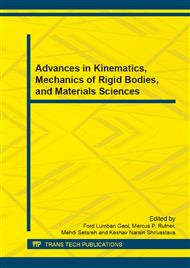p.69
p.75
p.83
p.93
p.105
p.111
p.117
p.125
p.131
Predicting Truck Load Variation Using Q-Truck Model
Abstract:
The study of heavy vehicle forces on pavement is important for both vehicle and pavement. Indeed it was identified several factors such as environment, materials and design consideration affects pavement damage over time with traffic loads playing a key role in deterioration. Therefore, this paper presents dynamically varying tire pavement interaction load, thus enable to assess the strain response of pavements influenced by road roughness, truck suspension system, variation of axle loading and vehicle speed. A 100m pavement with good evenness was simulated to check the sensitivity of the dynamic loads and heavy truck vertical motions to the roughness. The most important performance indicators that are required in pavement distress evaluation are radial strain at the bottom of the asphalt concrete and vertical strain at the subgrade surface was predicted using peak influence function approach. The results show that truck speed is the most important variables that interact with truck suspension system and thus effect of loading time are extremely important when calculating the critical.
Info:
Periodical:
Pages:
105-110
Citation:
Online since:
February 2014
Price:
Сopyright:
© 2014 Trans Tech Publications Ltd. All Rights Reserved
Share:
Citation:


